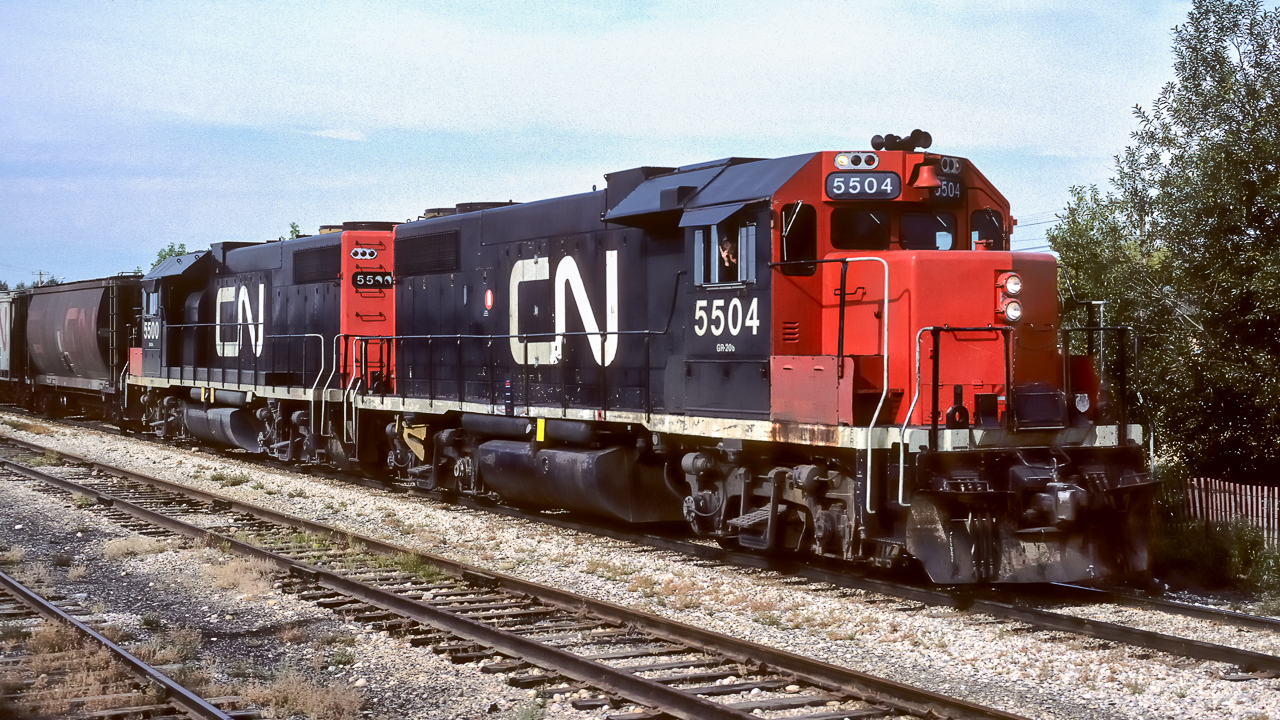|
Caption: I was looking through fellow contributor Kevin Floods photos and found a good match for a 'then and now' comparison. The subject is the 4704. In my picture, taken during the last week of August, 1986 in downtown Redwater, the 4704 is wearing its original number 5504 and the black CN noodle scheme. It is working the grain train and will be peddling cars from between Gibbons to end of track at Lindbergh. Its companion is the 5500. Both units at this time are 14 years old, having been built in 1972. They show typical signs of wear and tear, rust under the battery box, droopy double 00's in the rear numberboard, paint chips on the longhood etc. A plain set of GP38-2's. I love the early covered hoppers just behind the 5500. In the near future, the 5504 will go for repainting into zebra stripes as I will it photo it in Feb./87 with a new paint job and will be re-numbered 4704 in 1988. In Kevin's photo, taken on March 12th, 2019 (see the comment column for a link to his picture), it appears the 4704 has seen a paint job not to long ago in the past. A number of changes through the 34 years from the Redwater picture are evident. Bell and horns have been moved, flashing light in former bell location, remote control antennas on cab roof, vent on the top of shorthood nose, plus many other smaller changes. The 4704 will be turning 48 this year and should easily make it to the half century mark in 2022. This is quite an accomplishment, it feels like there is a message in there somewhere. It must be a difficult engineering task to build something so it lasts just long enough, but, not to long. Otherwise, build things that last forever and railroad companies don't come back to buy more. I think we have a Pink Energizer Bunny in the GP38, they just keep going and going . . . .
|



The link to Kevin Floods photo.
http://www.railpictures.ca/?attachment_id=36889
Classic CN!
Hmm, what are the yellow tags by the fuel tank fillers? Some kind of warning not to overfill them for light branchline use?
I have been asked that in the past. I have looked through many of my slides to see if there was one with legible writing, not. Also, when in close proximity, how many times did I read those little signs myself when the units passed by. But, that was 30+ years ago. The best I can recollect, which may prove totally wrong, they are mentioning the type of connection being used or something about the hose connecting to the loco. Could be something as simple as keeping the cap on the fill spout. I will keep an eye on this one and see if something doesn’t turn up in the future.
It is a mystery, as some have 2 while others only have 1.